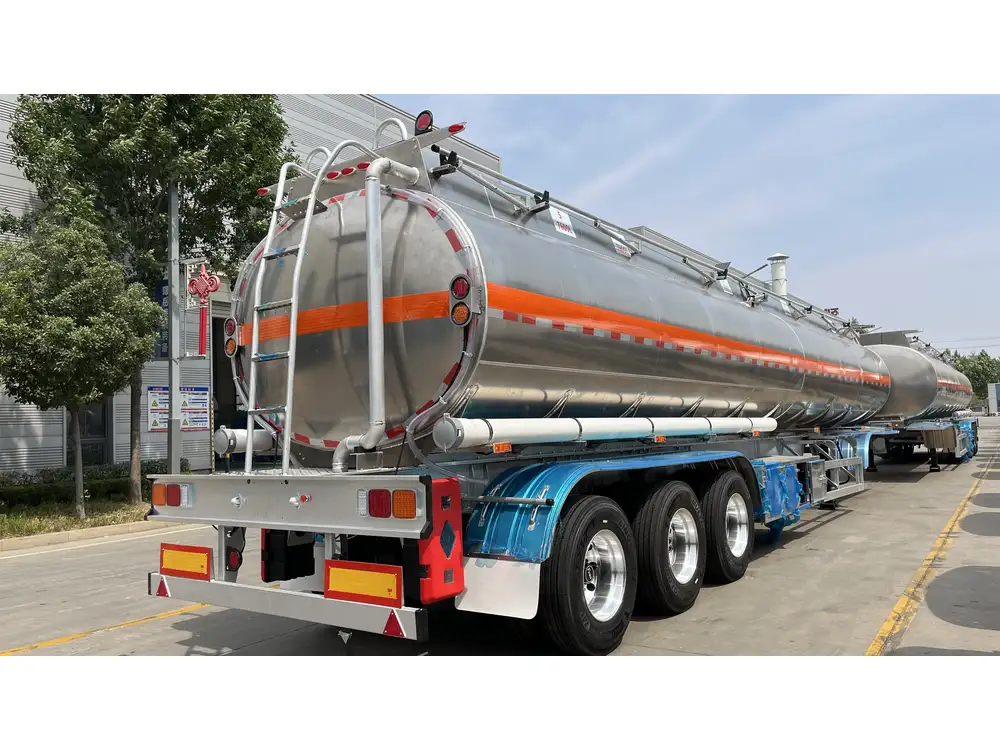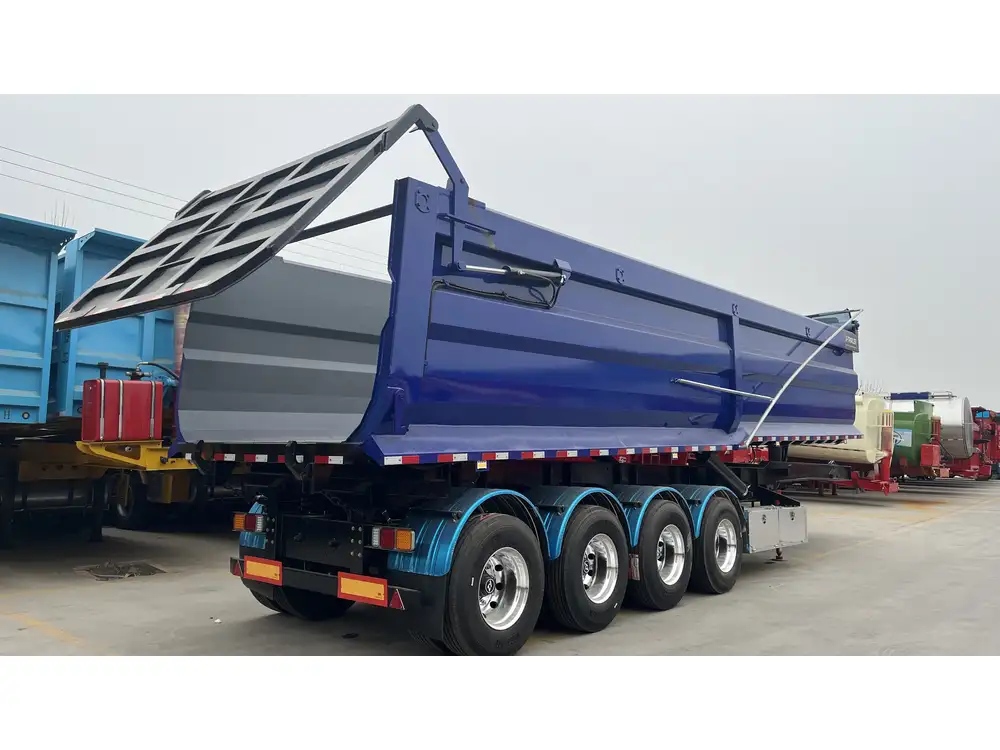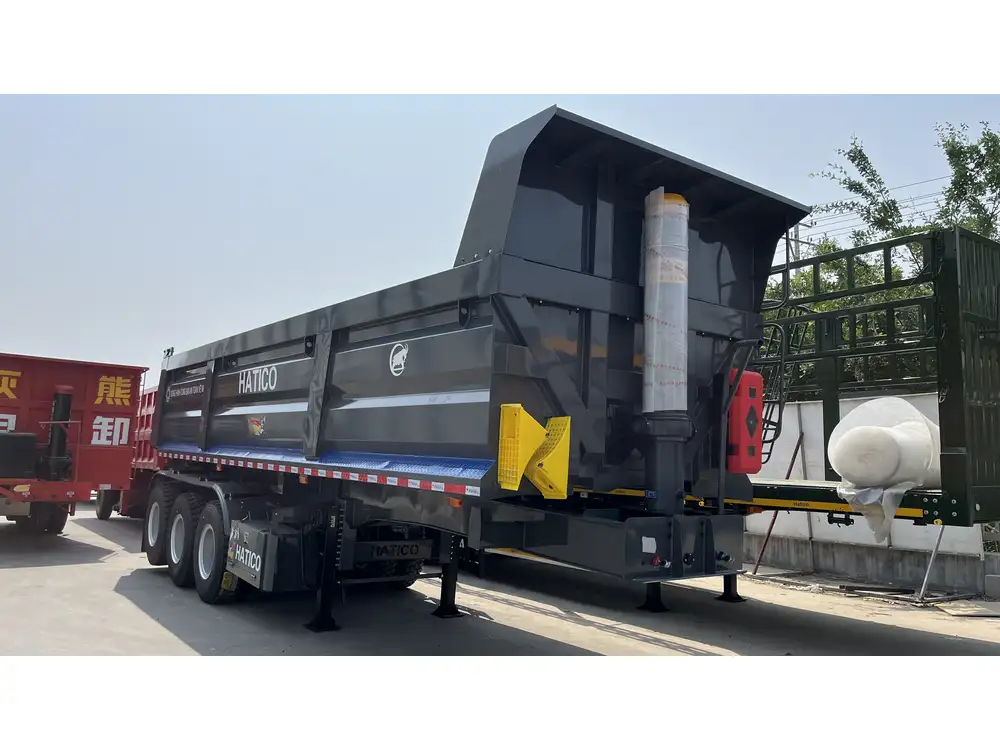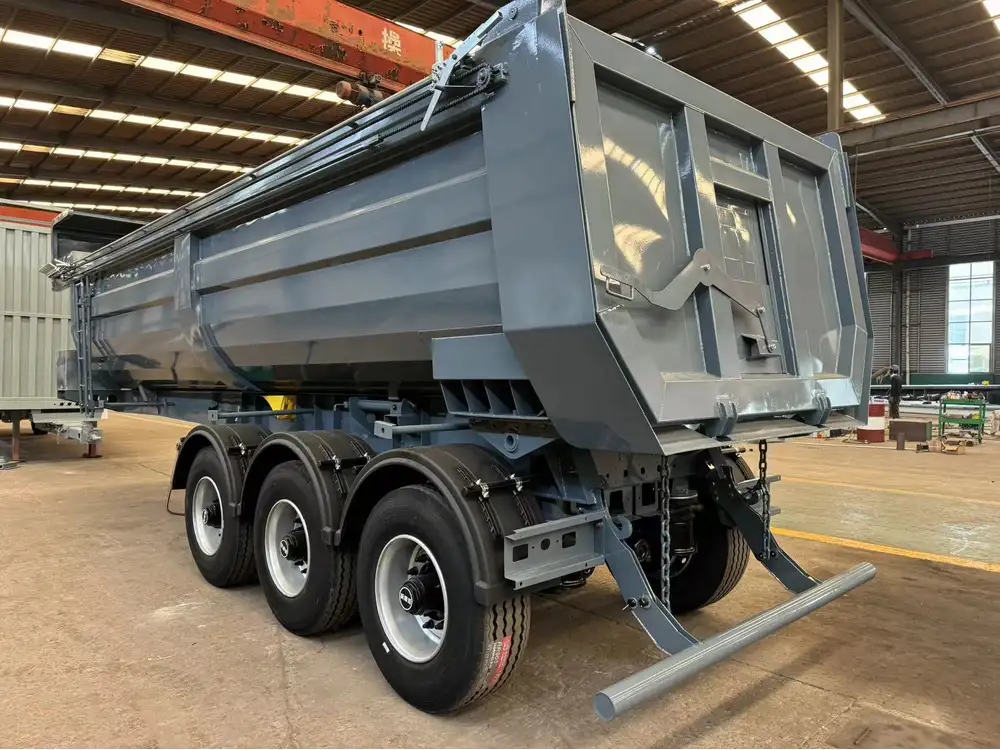The proper operation of grain trailers plays a crucial role in enhancing every aspect of grain transportation, particularly during the unloading process. Understanding the mechanics and benefits of lowering your grain trailer during dumping can lead to significant improvements in efficiency, safety, and longevity of equipment. Below, we delve deep into the reasons and recommendations regarding this important practice for grain handlers, farmers, and the transportation industry.
Table of Contents
- Comprehensive Overview
- The Mechanics of a Grain Trailer
- Safety First: Preventing Accidents
- 3.1. Gravity and Stability
- 3.2. Operator Safety
- Efficiency Gains: Operation and Time
- 4.1. Speed of Unloading
- 4.2. Reduced Spillage
- Equipment Longevity and Maintenance
- 5.1. Reducing Stress on the Trailer’s Structure
- 5.2. Impact on Tires and Suspension
- The Economic Perspective
- 6.1. Cost Savings through Reduced Wear
- 6.2. Long-Term ROI Analysis
- Best Practices for Lowering Grain Trailers
- 7.1. Proper Techniques
- 7.2. Maintenance Considerations
- Conclusion: The Strategic Advantage of Lowering Grain Trailers
1. Comprehensive Overview
Grain trailers are indispensable in modern agriculture, serving as the backbone of grain transport. Every ounce of efficiency gained during the unloading process translates to improved productivity and reduced operational risk. A common yet often overlooked practice is lowering the grain trailer while dumping. This article serves to elucidate the multifaceted benefits of this practice.

2. The Mechanics of a Grain Trailer
A grain trailer is designed to transport bulk commodities, usually mounted on a semi-truck chassis. Its structure includes:
| Component | Function |
|---|---|
| Chassis | Provides structural support and the ability to tow. |
| Hopper | The container for holding grain, designed for quick dumping. |
| Tarp System | Protects grain from weather and contaminants. |
| Axles and Tires | Supports weight distribution for safe transport. |
When a trailer is loaded, weight distribution plays a crucial role in ensuring stability during transit and unloading.
3. Safety First: Preventing Accidents
3.1. Gravity and Stability
Lowering a grain trailer while dumping stabilizes the center of gravity. When elevated, the trailer’s higher center of gravity can lead to:
- Increased risk of tipping: A trailer that’s unloaded at an excessive height invites instability, especially on uneven surfaces.
- Loss of control: If shifting occurs due to lateral movement, an elevated trailer can veer dangerously.

3.2. Operator Safety
The safety of the operator cannot be overlooked. Elevating a trailer requires additional caution:
- Visibility issues: Elevation can obstruct the operator’s line of sight, making it challenging to monitor the unloading area.
- Accidents due to misplaced loads: The potential for grain to fall outside designated areas increases, creating hazardous conditions.
4. Efficiency Gains: Operation and Time
4.1. Speed of Unloading
Lowering the trailer while dumping significantly enhances the speed of the unloading process. Key aspects include:
- Gravity-assist: When the trailer is low, the angle encourages grain to flow naturally, expediting the unloading cycle.
- Reduced need for re-positioning: Operators can quickly position themselves closer to unloading points, further cutting down on time.

4.2. Reduced Spillage
Every grain counts. Spillage not only lowers profitability but can also lead to:
- Environmental concerns: Spilled grain can attract pests and lead to crop diseases.
- Increased cleanup time and costs.
By lowering the grain trailer, control over the unloading process improves, significantly reducing spillage.
5. Equipment Longevity and Maintenance
5.1. Reducing Stress on the Trailer’s Structure
Lowering the trailer during dumps can minimize stress and wear on:
| Equipment | Impact |
|---|---|
| Frame | Decreased flexing reduces risk of cracks or breaks. |
| Suspension systems | Lower loading reduces strain leading to longer service life. |

5.2. Impact on Tires and Suspension
The dynamics of tire wear alter significantly with the way a trailer is unloaded. Regularly unloading from a height can lead to:
- Uneven tire wear: Heightened stress concentrations can lead to premature tire failure.
- Suspension issues: Heavy and jerky unloading increases wear on suspension components, leading to costly repairs.
6. The Economic Perspective
6.1. Cost Savings through Reduced Wear
Consider the financial implications of lowering your grain trailer—a systematic reduction in wear can lead to considerable savings:
- Reduced Repair Costs: Fewer repairs lead to a more stable budget.
- Extended Equipment Lifespan: Increasing the lifespan of a trailer allows for the deferral of capital expenditures.

6.2. Long-Term ROI Analysis
Investing a bit of time to train operators on the art of lowering trailers can return dividends. A clear breakdown includes:
- Annual saving potential through reduced maintenance and repair costs.
- Opportunities for efficiency: Enhanced unloading efficiency can free up time for additional loads, directly impacting profits.
7. Best Practices for Lowering Grain Trailers
7.1. Proper Techniques
To maximize the benefits of lowering grain trailers during unloading, operators should adhere to best practices:
- Before Unloading: Assess the terrain for stability—uneven ground can pose risks.
- Lowering Mechanism: Ensure that all mechanisms are functioning correctly before adjustments.
- Communication: Operators must communicate with ground crew, especially in remote unloading sites.

7.2. Maintenance Considerations
Regular maintenance checks are essential for ensuring the lowering mechanism’s reliability:
- Inspect hydraulics: Regular checks prevent failures during crucial unloading phases.
- Tire Checks: Routine assessments can unveil pre-existing stress before they evolve into critical issues.
8. Conclusion: The Strategic Advantage of Lowering Grain Trailers
In the ever-competitive world of agriculture and transportation, every efficiency matters. Lowering grain trailers while dumping presents an array of benefits, from enhanced safety and operational efficiency to long-term equipment savings. By fostering a culture of safety and emphasizing operational excellence, we position ourselves not merely as participants within the industry but as leaders driving change.
Implementing these strategies doesn’t just resolve an operational concern; it redefines our approach to grain transport, integrating safety and efficiency at every turn. In an industry where margins can be thin, the seemingly simple act of lowering a trailer while dumping can yield remarkable results, highlighting the importance of precision engineering and informed operational practices.
Moving forward, let us embrace this approach wholeheartedly as we strive for excellence in grain transport, ensuring our practices not only meet but exceed industry standards. Ultimately, the key to thriving in this competitive environment hinges on our ability to adapt, innovate, and prioritize the principles that foster safe, efficient, and cost-effective grain transportation.



